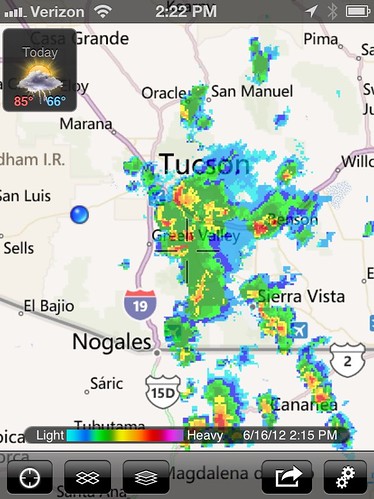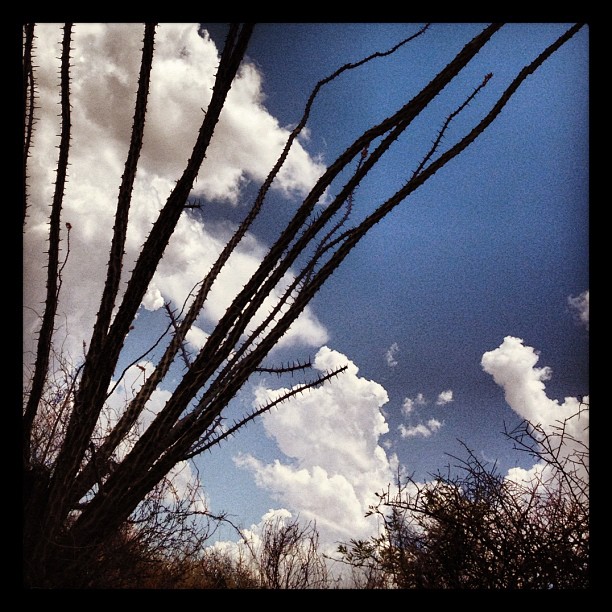First official day of summer monsoons in the Sonoran Desert (as seen through ocotillo plant). The traditional date for the start is a week away—June 24, or San Juan's Day.
What is a "monsoon?"Some say that's a misnomer, but according to the Arizona State University School of Geographical sciences, the "Arizona Monsoon" begins after a "prolonged (3 consecutive days or more) period of dew points averaging 55°F" or higher." More from ASU:
The Arizona Monsoon is a well-defined meteorological event (technically called a meteorological 'singularity') that occurs during the summer throughout the southwest portion of North America. During the winter time, the primary wind flow in Arizona is from the west or northwest—from California and Nevada. As we move into the summer, the winds shift to a southerly or southeasterly direction. Moisture streams northward from the Pacific Ocean and the Gulf of Mexico. This shift produces a radical change in moisture conditions statewide.
Such a change, together with daytime heating, is the key to the Arizona monsoon. This wind shift is the result of two meteorological changes:
- The movement northward from winter to summer of the huge upper air subtropical high pressure cells, specifically the so-called Bermuda High (H).
These two features combine to create strong southerly flow over Arizona. The southerly winds push moisture north-ward from Mexico. The exact source region for the moisture of the Arizona monsoon is unknown. Researchers have proposed the Gulf of Mexico and/or the Gulf of California as the source regions but conclusive evidence has so far been elusive.
- In addition, the intense heating of the desert creates rising air and surface low pressure (called a thermal low) in the Mohave (L).
 |
| MyRadar iPhone app showing the monsoon action on June 16, 2012 |
Here at Ravenrock, black-throated sparrows started singing right on cue as clouds build over the mountains.
- Posted using BlogPress from my iPhone

